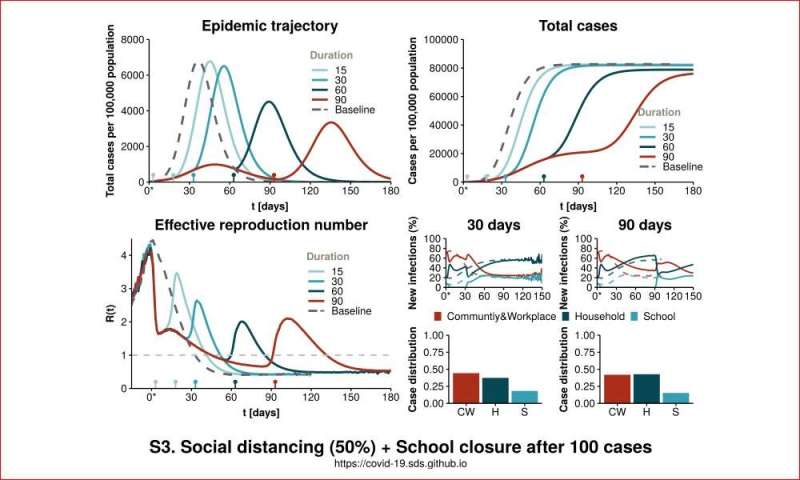
The complete isolation of the population in the face of an epidemic such as COVID-19 is a strategy that requires subsequently adopting active measures in order to maximize its effectiveness, such as conducting large scale diagnostic tests, isolating people with symptoms and identifying those with whom they have had contact. This is one of the main conclusions from a study conducted by a team of researchers from the Universidad Carlos III de Madrid (UC3M), the University of Zaragoza, the Massachusetts Institute of Technology (MIT) and the ISI Foundation in Italy.
The results, based on mathematical models and real-world data from the mobility flow of people, indicate that complete isolation of the population requires subsequently adopting active measures, to prevent a new outbreak. “Using contact matrices at this level of detail, we can understand the effect of strategies such as closing schools, places of work or restaurants and other non-essential spaces,” explains Esteban Moro, a professor in the Department of Mathematics at the UC3M and co-author of this study, currently a guest professor at the MIT Media Lab.
“Before the need to adopt measures to contain and eradicate the current COVID-19 pandemic, we have simulated the evolution of the epidemic in a real-world population, in this case within the area of Boston. Our models show us that a new wave of infection is highly likely in almost all scenarios. The fundamental conclusion is that passive containment policies should be combined with other more aggressive measures,” noted Yamir Moreno, theoretical physicist, co-author of the study and responsible for the Group of Networks and Complex Systems (COSNET) at the Institute of Biocomputation and Physics of Complex Systems (BIFI) at the University of Zaragoza.
To conduct this research, the scientists used real-world mobility data from mobile phone users within the U.S., provided by Cuebiq Inc’s Data for good program. Cuebiq Inc. is a company that records the locations of its users and aggregates them anonymously. They also analyzed data from a Boston area census to construct a joint network of locations in three layers (community, schools and homes) and used the SIR model to model the spread of epidemics. “We are also currently working with real-world mobility data in New York City, which is the current epicenter for the epidemic in the U.S.,” Esteban Moro noted. “If high-resolution mobility data is available, our approach can be easily replicated for new cities or countries to measure the impact of social distancing strategies before the epidemic,” he added.
This research seeks to obtain data to evaluate the impact of social distancing strategies that have been adopted in different countries in an effort to fight COVID-19, as well as define how long they should be in force and which are the most effective measures. They also analyze the probability that a second outbreak could occur later, or the best way to prepare for a hypothetical second wave.
Source: Read Full Article
